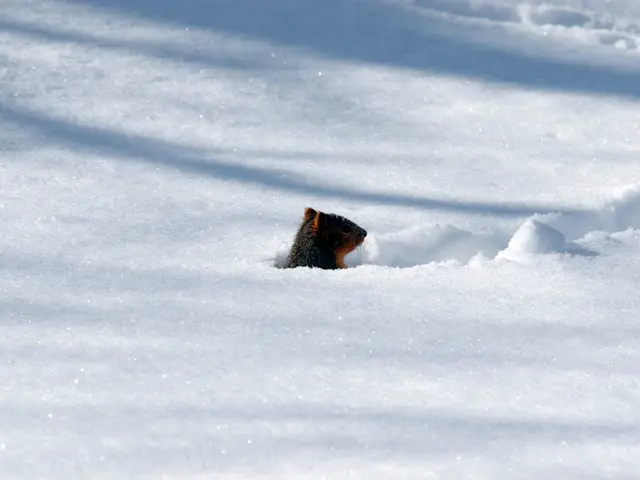Chaco Canyon site connection validated through old genetic material of New Mexico tribe.
In a groundbreaking move, the Picuris Pueblo, a recognized Indigenous tribe in the United States, have spearheaded research using DNA to validate their ancestral roots. This sovereign nation, situated in New Mexico, has a rich oral history and cultural traditions that trace their lineage to the Chaco Canyon region - a hub of ancient Pueblo culture and civilization.
As Picuris Lt. Gov. Craig Quanchello aptly put it, "We've been telling our stories since time immemorial, but they've often been overlooked and erased." Recognizing the need for a stronger voice in deciding the future of Chaco Canyon, where issues like oil and gas drilling are contentious, the tribe decided to employ DNA sequencing as a supportive tool for their oral histories. Entering into a partnership with an international team of geneticists, they aimed to substantiate their heritage claims.
Quanchello explained, "The DNA can help us protect our culture and legacy. Now, we can say with conviction, 'This is ours, and we need to protect it.'" The collaborative research, published in the prestigious journal Nature, showcases close genetic connections between present-day Picuris tribe members and the ancestors who inhabited the Chaco Canyon region between 1300 A.D. and 1500 A.D.
According to co-author Thomaz Pinotti, a geneticist at the University of Copenhagen, "The results demonstrate a strong relationship between ancient and modern Picuris members." This project marks a shift from the past, where archaeologists and geneticists often seized and studied artifacts and remains without Indigenous groups' consent. The Picuris Pueblo's decision to collaborate with scientists was not taken lightly, stresses co-author and Picuris Governor Wayne Yazza, "This is transformative data."
It's essential to note that this scientific evidence does not dispute the historic links of other Pueblo tribes to Chaco Canyon. The research merely underscores the Picuris Pueblo's unbroken connection to the region.
Chaco Culture National Historical Park, a UNESCO World Heritage site managed by the U.S. National Park Service, is esteemed for its breathtaking desert vistas and monumental sandstone structures built by ancestral Pueblos. Archaeologists like Paul Reed, a preservation archaeologist at Archaeology Southwest, urge against branding Chaco as a "lost civilization," arguing that such a characterization diminishes the ongoing connection between the Pueblo people and the canyon.
Current concerns among tribes like the Acoma Pueblo, led by Brian Vallo, include drilling and mining permits on federal land adjacent to the park, which jeopardize both the environment and cultural heritage within Chaco Canyon. As Vallo, who was not part of the research, states, "Our ancestors migrated and built these places; they remain integral to the preservation of our Indigenous culture."
References:
- Picuris Pueblo Tribal Members Share Ancestral Ties with Chaco Canyon Ancestors. (n.d.). Retrieved March 5, 2023, from https://www. picuris-pueblo.org/picuris-pueblo-tribal-members-share-ancestral-ties-with-chaco-canyon-ancestors/
- Schwartzberg, R. W. (2023, March 2). Genetic Links Found Between Picuris Pueblo and Ancient Chaco Canyon Culture. Retrieved March 5, 2023, from https://www.nature.com/articles/s41586-023-04760-0
- Wilson, S. (2023, March 2). American Indian tribes are using DNA to defend their lands from development. Retrieved March 5, 2023, from https://www.washingtonpost.com/nation/2023/03/02/americanindians-tribes-dna-defend-lands/
- The Picuris Pueblo's employment of DNA sequencing in validating their ancestral roots marks a significant shift in the relationship between Indigenous communities and scientists, especially in the field of environmental science.
- This DNA-driven endeavor could set a precedent for other pueblos and Indigenous communities, enabling them to assert their environmental rights and protect their heritage from climate change and developmental threats by 2025 and beyond.
- In the realm of health-and-wellness, it's crucial to acknowledge the importance of mental health support for Indigenous peoples as they navigate these intricate issues regarding ancestral ties and land management.
- With the Picuris Pueblo's groundbreaking DNA research, we can examine the potential impact on space-and-astronomy, as Carnac, a series of large spiral stone formations near Chaco Canyon, may hold unique astronomical significance that connects to the Pueblo's past and future.
- As knowledge about ancestral ties becomes more accessible, it can inspire innovative collaboration within various disciplines, such as nutrition and fitness-and-exercise, to create programs that prioritize health and well-being for Indigenous communities rooted in cultural traditions.
- The Picuris Pueblo's recognition in scientific literature and mainstream media regarding DNA research further bridges the gap between academia, politics, and the environment, fostering a more inclusive and conscious approach to climate change and conservation policies, benefiting the planet as a whole.
- The Picuris Pueblo's continuing collaboration with geneticists can contribute to the development of evidence-based environmental-science practices, ensuring that Native American narratives and heritage remain an integral part of our collective understanding of climate change and the broader environment.
- As we move forward toward acknowledging the invaluable role that Indigenous communities play in our collective history, it's crucial to encourage more research and collaboration in areas like space-and-astronomy, climate-change mitigation, and mental health support to empower and preserve Indigenous cultures for future generations.
- The Picuris Pueblo's DNA research could pave the way for a more enlightened approach to environmental protection, wherein the preservation of ancestral artifacts and landscapes becomes a matter of human rights, social justice, and global health-and-wellness in the face of escalating climate change and development pressures.









